Here’s why you need one:
Paper or digital? Choose based on your style:
Start by scheduling fixed commitments (classes, work) and add study blocks. Use tools like Google Calendar for digital or notebooks for paper. Stick to consistent study schedules, track progress, and adjust weekly.
Quick Tip: Use color-coding, the Pomodoro Technique, or templates like MyStudyLife to stay organized. Whether you’re a visual learner or tech-savvy, a planner can help you manage time, reduce stress, and hit your academic goals.
A study planner helps students stay on top of their academic workload. Instead of juggling assignments in their heads, it offers a clear system to organize tasks. By marking off commitments like classes, work, and social activities, students can easily spot open windows for studying and use that time effectively .
It’s also a handy tool for breaking down big projects into smaller, more manageable steps. Setting personal deadlines ahead of the actual due dates creates a cushion for unexpected setbacks . This structured approach not only keeps things running smoothly but also helps reduce stress.
Planning ahead is a game-changer for easing academic pressure. With a study planner, students can balance their workload and feel more in control . Seeing tasks and deadlines laid out visually makes it easier to tackle them one step at a time.
A consistent study schedule is key. By setting aside specific times for studying, extracurriculars, and self-care, students can avoid burnout. Regularly reviewing plans also helps spot potential scheduling conflicts early, giving them time to adjust and steer clear of last-minute cramming .
Once the schedule is set and stress is under control, students can focus on achieving their academic goals. A study planner acts as both a roadmap and a progress tracker, helping turn goals into tangible outcomes.
Research highlights the impact of structured planning:
| Goal-Setting Method | Success Rate Boost |
|---|---|
| Writing Down Goals | 42% more likely to achieve them |
| Tracking Weekly Progress | 40% higher success rates |
| Reviewing Goals Regularly | 10x greater likelihood of success |
To get the most out of a study planner, students should set aside time each week to review their progress for each course . Breaking larger goals into smaller, weekly milestones makes progress easier to track and keeps motivation high throughout the semester.
Making study planning a regular habit, rather than a one-off task, strengthens time management skills and lays a reliable foundation for academic success .
Decide whether a paper or digital planner suits your study habits better. Each option has its pros and cons:
| Feature | Paper Planner | Digital Planner |
|---|---|---|
| Ease of Access | Kept in one physical spot | Available on multiple devices |
| Customization | Handwritten and decorated | Pre-made templates available |
| Reminders | Requires manual tracking | Offers automated notifications |
| Focus | Fewer distractions | May lead to tech interruptions |
| Durability | No need for power | Needs charging or internet |
Start by scheduling fixed commitments like classes and work . Then, plan study sessions during your most productive hours.
Here’s what to include in your planner:
Pro tip: Set internal deadlines a few days before actual due dates to give yourself extra time . Once your layout is ready, you can adjust it to match your personal study habits.
Now that your layout is set, customize it to make it practical and easy to stick with. Kristen Scatton puts it well:
"A study plan is an organized schedule outlining study times and learning goals"
A popular strategy is the Pomodoro Technique, where you alternate between focused study periods and short breaks.
For the best results:
This approach helps you stay on track and make steady progress.
Picking the right planner format can make a big difference in how you organize and manage your academic life. The choice largely depends on your learning style and how you prefer to stay organized.
Digital planners are great for automating reminders, syncing across devices, and sharing schedules with others. However, they can sometimes cause digital eye strain and might not be as effective for memory retention .
Paper planners, on the other hand, come with some clear mental advantages. Luxafor explains:
"There are plenty of cognitive benefits of longhand writing, which aids in memory retention and strengthens task focus. Unlike digital devices with their constant notifications, paper planners offer a distraction-free zone for scheduling and prioritizing" .
Here’s a quick breakdown of how each format stacks up:
| Feature | Impact on Learning | Best For |
|---|---|---|
| Paper Planners | Better memory retention, improved focus | Visual learners, detailed note-taking |
| Digital Planners | Fast access, automated tracking | Multi-device users, collaborative study |
| Hybrid Approach | Combines both strengths | Managing complex academic schedules |
With this in mind, let’s look at the tools you’ll need to make the most of your chosen format.
For digital planning, Google Calendar is a reliable option that works across multiple devices .
If you prefer paper planners, consider these essentials:
As the College for Adult Learning points out:
"Everyone is different, so there’s no one-size-fits-all approach to planning" .
A hybrid system can be especially effective. Use digital tools for scheduling and reminders, while keeping a paper planner for detailed notes and task prioritization. This way, you can combine the ease of technology with the focus and memory benefits of handwriting.
Keeping track of your study habits is a great way to stay consistent and see how you’re progressing. Tools like MyStudyLife include features for monitoring session durations and managing tasks, which can make this process easier .
Here’s what a good study tracker should cover:
| Component | Purpose | How to Use It |
|---|---|---|
| Session Duration | Measure time spent studying | Note start and end times of sessions |
| Concept Mastery | Gauge understanding levels | Rate comprehension on a 1–5 scale |
| Weekly Reflection | Assess progress and challenges | Write down achievements and obstacles |
| Motivation Level | Track energy and focus | Record how engaged you feel during study time |
Research by Marco Stojanovic highlights that students who regularly track their study habits tend to have better focus and feel more positive about their progress . Once you’ve got these tracking basics in place, you can use templates to organize your study schedule even further.
In February 2025, Retable launched customizable education spreadsheet templates designed to simplify academic organization. These templates help you transform tracking data into a clear and actionable study plan.
Here are some features worth including in your templates:
Once your planner is set up, personalizing it can make studying more enjoyable and help keep you motivated. Companies like Dark Moon Paper offer themed sticker kits, such as "Lilac Dusk" and "Electric Forest", to turn plain planners into visually appealing tools.
Practical decoration ideas include:
You can also add some flair with washi tape, decorative stickers, or storage accessories. Prefer digital planning? Platforms like Notion offer customizable templates, such as "Janice Studies’ student dashboard" or Liesl Geissler’s "Aesthetic Light Academia School Planner/Organizer" . These combine practical features with stylish designs for a seamless planning experience.
Create a study planner that fits your learning style and daily routine. Academic tutor Bryce Warwick puts it simply: "Consistency is what matters more than anything" . This principle should guide you as you design your system.
A solid study planner helps you manage your workload effectively. Studies show our working memory can only handle three to five items at once, so writing down tasks, scheduling study sessions, and setting reminders is essential.
Digital tools like MyStudyLife, trusted by over 20 million students , highlight the importance of staying consistent while allowing for flexibility. Whether you prefer a digital app or a traditional paper planner, the key is to create a system that works for you and keeps you on track.
Here are the core elements of a strong study planning system:
| Component | Implementation | Purpose |
|---|---|---|
| Regular Review | Weekly check-ins on coursework | Stay on top of assignments and avoid falling behind |
| Time Blocking | Dedicated slots for each subject | Ensure all subjects get equal attention |
| Flexibility | Include buffer time | Handle unexpected changes without losing momentum |
| Break Schedule | 15-minute breaks between sessions | Stay focused and avoid burnout |
Stickers Made for Planning
Our custom stickers are a fuss-free way to brighten up your planner pages with perfectly-sized designs that add a spark of personality to every layout.
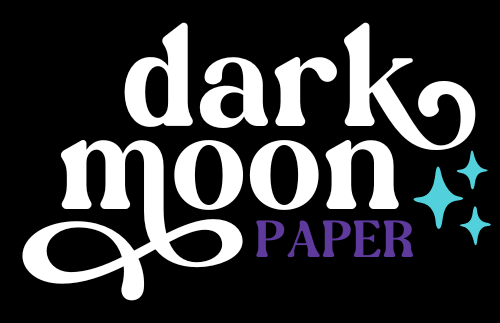
Why use planner stickers?
Planner stickers make organizing easy, fun, and personal! Add color, creativity, and structure to every page, transforming your planner into a tool that reflects you. Perfect for tracking, decorating, and staying inspired daily!
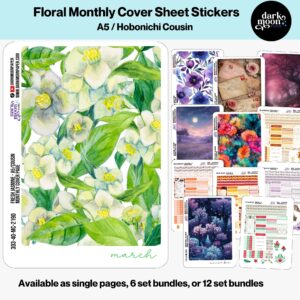
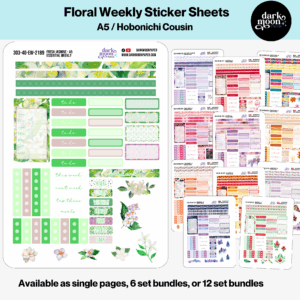
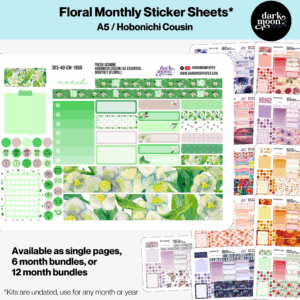
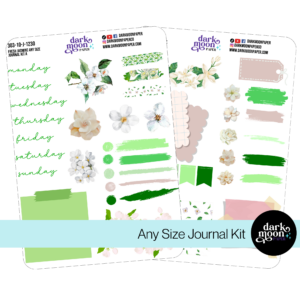
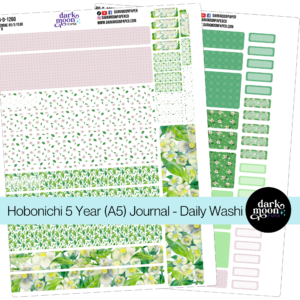
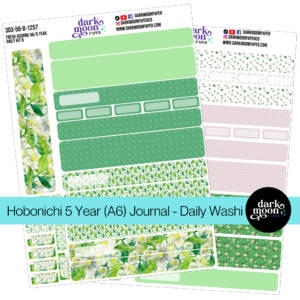
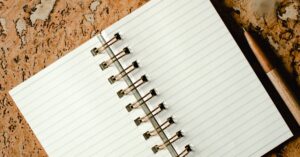
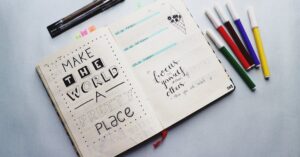
Hello and welcome!
I’m Rachael Snow, a lifelong artist and entrepreneur, and I started Dark Moon Paper to blend my love of art, technology, and the mysterious beauty of the world around us. My sticker kits are meant to set the mood, tell a story, and give you a little escape from the ordinary.
I work from my cozy studio tucked away in the beautiful woods of Oregon, surrounded by nature and a dark night sky full of stars.